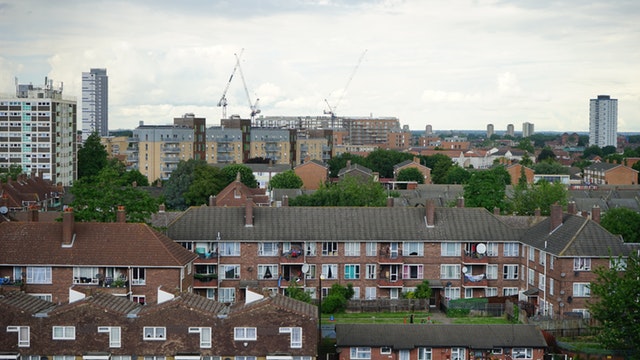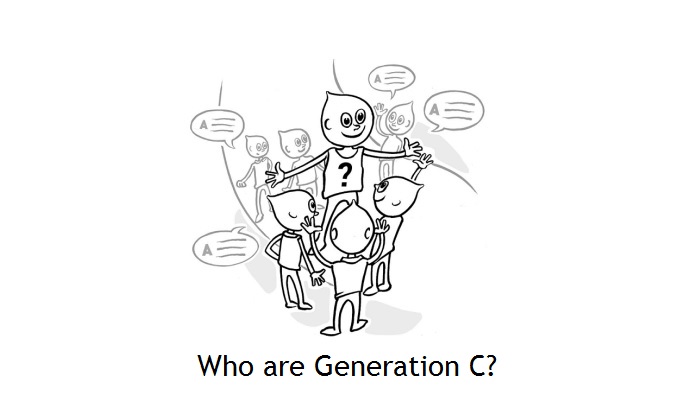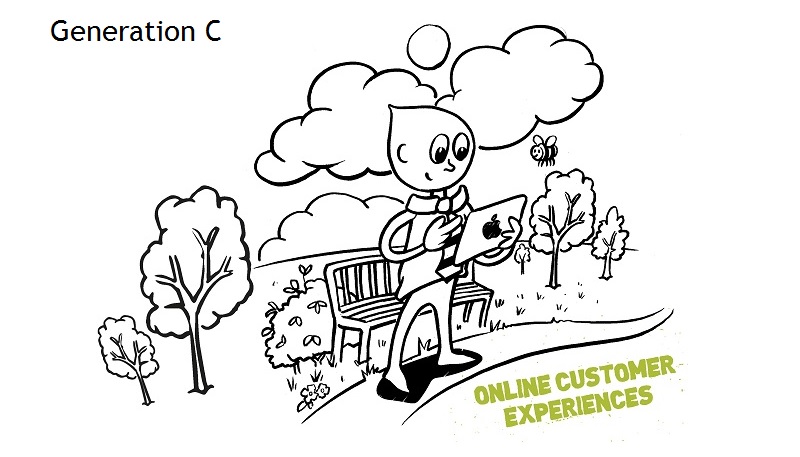Our lives might be going digital, but what does that mean for the physical environments in which we live, work and play? Whether checking air quality or preventing street violence, what is the public sector doing to harness new technologies that deliver a better citizen experience; not just in interactions with services, but in the infrastructure that supports our lives? From housing to transport, how are these connected communities being brought to life by Edge computing and IoT in the UK?
Twenty-year-old lampposts that can alert emergency services of potential incidents
Traditional post-boxes that can tell how polluted a street is. Twenty-year-old lampposts that can alert emergency services of potential incidents. Pavements which can help inform shop opening times. It might seem like science fiction, yet this is exactly what can be achieved in our communities today.

Is it a utopia? No, it is all been made possible by the increasing use of Edge computing and the Internet of Things (IoT). What are they? As well explained by Matt Burgess in WIRED, IoT, is “everything connected to the internet, but it is increasingly being used to define objects that "talk" to each other”. It is the sensor in the lamppost sending notifications to emergency services of an increase in sound.
Edge computing, on the other hand, is what Paul Miller sums up in the the Verge as “computing that’s done at or near the source of the data, instead of relying on the cloud at one of a dozen data to do all the work. It doesn’t mean the cloud will disappear. It means the cloud is coming to you.”
For our lamppost, it’s the audio data from the sensor being processed rapidly on or near where it was created. The refined information can be sent instantly, rather than having to be sent to a central point to be analysed, before going to the nearest emergency services, wasting valuable time.
Cross-industry devices, such as those targeted at smart buildings (including LED lighting, HVAC and physical security systems) will take the lead as connectivity is driven into higher-volume, lower cost devices.
They are new and, potentially, overhyped, yet have immense implications for the connected lives of the future. Gartner predicts that there will be over 20 billion connected things by 2020, fuelled by the rise in IoT. That is autonomous cars, robots in factories, smart appliances, turbines in the North Sea, all talking to each other, all creating data which needs to be captured and actioned. IoT provides the connection, Edge computing provides the ability to process information in real time, close to the source of the data.

Think this is just theory? All over the world, it’s becoming reality. When Alphabet, Google’s parent company, wanted to create a smart city to test its ideas of urban technology, it signed a deal to turn a 12-acre site of disused Toronto waterfront into Sidewalk Toronto. With a commitment to spending an initial $50 million on the site, plans include, according to a Fast Company article, “testing new architectural construction technology, new types of energy systems that have a neutral or positive footprint, as well as self-driving car technology and other transit options that ‘are more affordable, safe, and convenient than the private car’.”
It sounds fantastic, and exactly how communities should benefit from being more connected. Yet how many UK local authorities have the budget to spend on such an endeavour, or indeed the space? North American cities, many of which were planned and designed in very specific ways, naturally have more space than the condensed, organic sprawl of UK urban and suburban areas.
Using old infrastructure to enable new capabilities
The answer lies in an approach that we covered in our previous post on digital identity verification – why sometimes it is better to build (in this case literally) on what you have got, rather than starting from scratch. Or, as David Wilde, a digital and strategic change expert and Infomentum’s public services advisor, put it, “Does it just have to be a light bulb in a lamppost? Why can’t it collect data as well?”
In our previous example, sensors could be integrated into lampposts. They would use the power infrastructure already in place, so wouldn’t require digging up roads to lay new cables. At most, there may be a need for a wireless router to deliver connectivity at certain points on the road. Yet by overlaying what already exists with new digital technology, that street of lampposts could be used to gather and share information to support connected cars or track pedestrian traffic. Capturing data that can then be fed into either long-term planning – for instance indicating when shops might open in areas of high footfall– or more instant decision-making, such as informing traffic light sequences to manage congestion.
By using digital technologies, issues could be solved before they become problems without increasing the resource demands required to maintain them
In London, IoT sensors are being used to gather data to inform decisions being made to improve air quality. This, in turn, helps increase the health prospects and overall quality of life in the city. Elsewhere in the capital, housing associations are using the technology to pilot predictive maintenance, an approach well established in manufacturing. When introduced, it could have a huge impact on residents – the end of the out of service lift, or faulty boilers, for example. Issues solved before they become problems without increasing the resource demands required to maintain them.
In the Netherlands, sensors are being used to monitor and resolve passenger congestion in train stations and identify potential incidents in a night time economy location.
When building from scratch, integrate digital at the planning phase
That said, there is only so far that we can retrofit what we have already. In the drive to solve the UK’s housing crisis, it is imperative that new builds, and the services that supply them, are designed with the modern, connected user in mind. It’s a core tenet of any sort of digital initiative.
Where do Edge and IoT come into this? We’ve previously mentioned utilising existing infrastructure to avoid having to cause significant disruption to established communities. If the entire site is being built from scratch, there is the opportunity to have it all integrated from the start. While we’ve talked about this in a residential context, it applies just as much to a commercial office development or industrial park.

For instance, logistics sites currently require significant space for a variety of vehicles to load and unload safely. On the inbound, heavy goods vehicles with standardised containers deliver cargo from a port into the depot. Once unloaded, this cargo then needs to be moved to a distribution centre, where it may be loaded onto different types of vehicles, such as side-opening trailers. If a new site were to be built with digital technologies like Edge and IoT baked in, the cargo could be moved from one side of the operation to the other by autonomous trailers. To do this requires a different type of environment, such as Cainiao’s intelligent logistics park in China, but would dramatically reduce the amount of space needed to accommodate the different types of lorries and HGVs that are currently used. This is space which could be used for warehousing, increasing the capacity of the site without requiring more acreage.
Unlocking the next age of digital transformation
The likes of Sidewalk Toronto, Google’s smart city project, are the ideal – a project where enough money, coupled with local government appetite to innovate, can demonstrate what the likes of Edge and IoT can deliver for connected communities. In the real world of the UK’s austerity-driven public sector, the approach needs to be tailored. It might be using existing infrastructure, in which case there is an imperative to understand how Edge computing can enable the rapid processing and use of data captured by IoT sensors. It might be that having the opportunity to start from scratch means building these digital technologies in from the start.
This post is the latest in our focus on Smart Lives, which was recently the subject of conversation at a gathering of public sector leaders hosted by Infomentum. In the last few blogs, we discussed the future of digital identity verification and the public sector's approach to cloud adoption. Over the coming weeks, we will be exploring some fascinating use cases of adopting digital technologies and examining a few hot topics raised during our event. Be sure to subscribe to receive updates as they are published, as well as more on our exploration of Smart Lives. We’d also be delighted to hear your thoughts on migrating to the cloud, managing legacy applications, digital transformation and the public sector, either in the comments below or on our social media channels.By understanding how Edge computing and IoT can be incorporated, local governments can deliver communities that are fit for our connected lives and future proofed for the changes to come.







